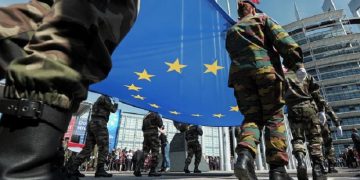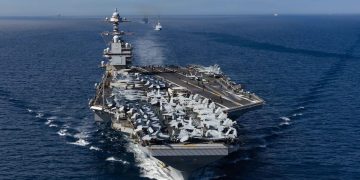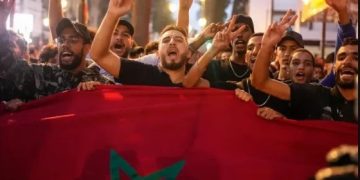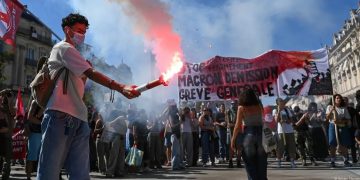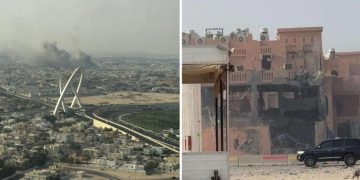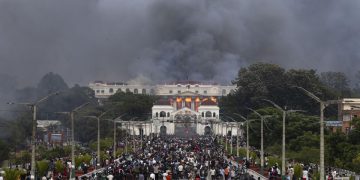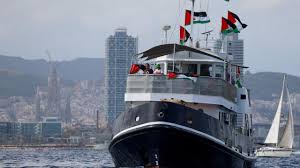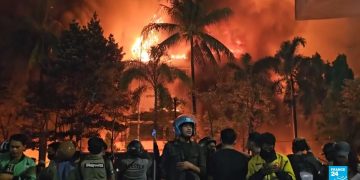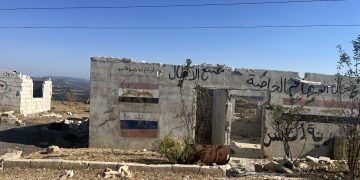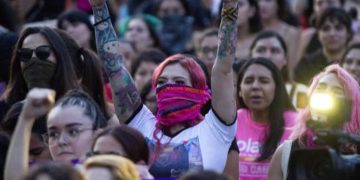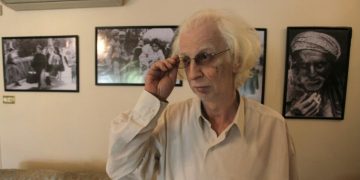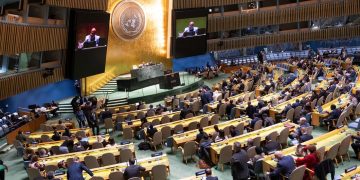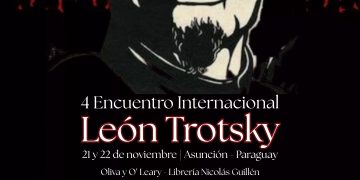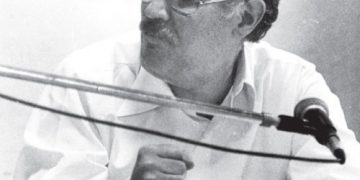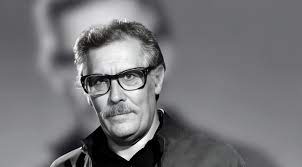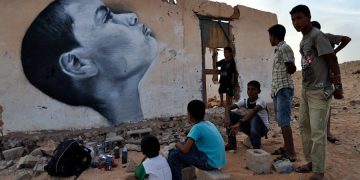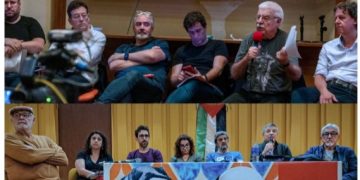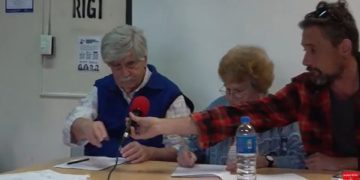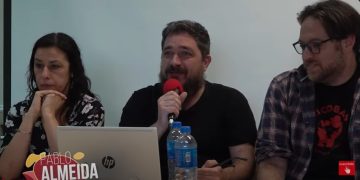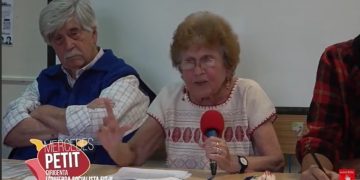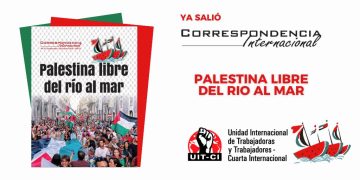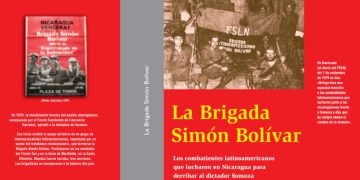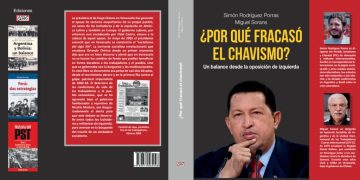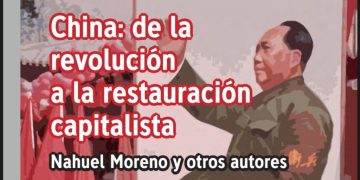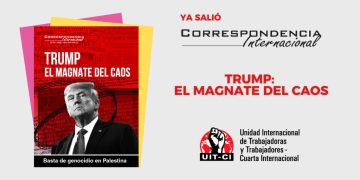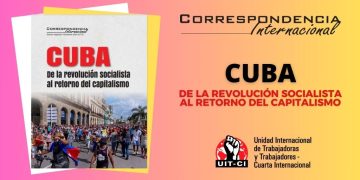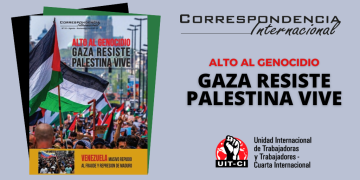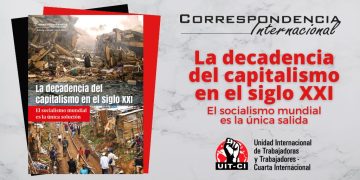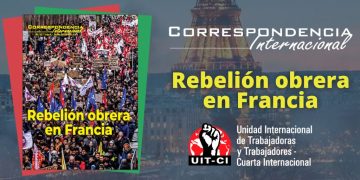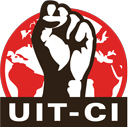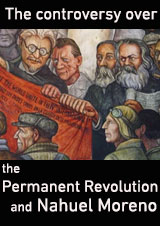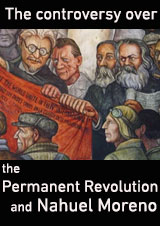 By Miguel Sorans, a leader of IWU-FI (September 2018)
By Miguel Sorans, a leader of IWU-FI (September 2018)
In this paper we clear out and push forward an exchange with international socialist revolutionary comrades we know are genuinely engaged in developing theoretically and politically certain analytical and political topics dealt by Nahuel Moreno on the revolutions post WW2.
In fact, we want to answer the malicious allegation that Nahuel Moreno would have capitulated to the Menshevik and Stalinist “two-stage theory”.
Throughout history, various leaders and currents of Trotskyism in its two deflections, the opportunist (Pablo and Mandel) and the sectarian (Healy, Lambert, Lora) employed that kind of false polemics. It is their way to avoid a serious debate between Marxists and revolutionaries and hide their own anti-Trotskyist positions. Among others, we can now mention sectors as the Coordinating Committee for the Refoundation of the Fourth International (CRCI) headed by, among others, Jorge Altamira (PO Argentina) and Savas Michel-Matsas, the Greek EEK leader and the Trotskyist Fraction (PTS Argentina). It was a disappointment the recent arrival of a volume in the Italian PCL (Workers Communist Party) web page, a former organisation of CRCI, written by one of their leaders under this name: “Morenism, a school of a deviated Trotskyism”.
This book is in the wrong methodological area of abuses and slander. It is a classic method adopted by the school of leaders that attack Moreno, altering his ideas, squandering and manipulating quotations out of context. The aim is to avoid a real theoretical and political argument to search for the truth. The old method of «a lie told once remains a lie, but a lie told a thousand times becomes the truth”. This counterfeiter method seeks to confuse the vanguard fighter. In the book, the writer includes an insult to Moreno in every paragraph. He falsely accuses Moreno of being an “expert smuggler”, a Menshevik or a liar. This book even states Moreno “revised Trotsky’s thinking in such an objective manner that had never been done in the history of Trotskyism”. In this confused book, the writer’s intention is to prove Nahuel Moreno passed to the revisionist field of Trotskyism, giving up the Permanent Revolution theory.We show that, on the contrary, Nahuel Moreno ratified in all his writings the legitimacy of the Permanent Revolution theory.
- Moreno updated the 1929 Theses because some new phenomena emerged in the post-war period, different in several aspects from the provisions made by Trotsky. A period of revolutions started, but none of them were an October revolution
So: Did Moreno abandon the Permanent theory and theses? Did Moreno turn into a two-stage theoretician? Did he pass on to the Menshevik and Stalinist two-stage theory, the first one “democratic”, with political unity with the bourgeoisie and even supporting a bourgeois government? And the second one “socialist”? Is there any example of Morenism giving support to bourgeois governments or Popular Front ones, as Stalinism and the revisionist and opportunist Trotskyist currents have done?
We prove that none of that is real, neither in his works nor in the reality of 70 years of class struggle.
What happened in post-war 1945? Since the colossal triumph that meant the downfall of Nazism, a stage of great revolutions, of a world revolutionary rise started. Revolutionary victories that expropriated the bourgeoisie as in Eastern Europe, Yugoslavia, in the Chinese revolution of 1949, in the Cuban revolution of 1959. New bureaucratic or deformed worker states emerged.
The great new event not foreseen or lived by Trotsky (assassinated in 1940) is that counter-revolutionary apparatchiks that controlled the working class led these revolutionary accomplishments: in the first place, the bureaucratic Stalinist communist parties, and different revolutionary leaders who were not socialists. Against Trotsky’s odds, who considered that Stalinism would sink into crisis and the Fourth would be a mass party at the end of the war, the opposite happened. For different reasons, the crisis of the revolutionary leadership not only did not disappear, but it continued. This situation opened a great confusion in the Trotskyist movement. Trotskyism and the Fourth, without Trotsky, turned into a marginal movement from the post-war, and in a deep crisis which could explain the emergence of revisionist, opportunist and sectarian currents.
A revolutionary period started, with revolutions in almost all continents. But none of them was an October revolution, i.e., without the central role of the working class and the leadership of a Marxist revolutionary party. Those were the two assumptions in the Theses written on the Permanent Revolution by Leon Trotsky. And these two premises were not met in this new stage of great revolutions. Many interpretations emerged.
Both Pablo and Mandel’s opportunism and the sectarians said: The Permanent Revolution theses of 1929 were fulfilled “by the book”, and they gave two equivocal and nefarious interpretations.
The opportunists, to justify their dogmatism, defined the Stalinist or reformist triumphant leaders as Marxist revolutionaries. They acknowledged the Stalinist and bureaucratic Communist Party of China had headed a triumphant revolution that expropriated the bourgeoisie. But they made the huge and tragic error of considering it a revolutionary party, representing the Chinese working class, therefore forcing the alleged “fulfilment” of Trotsky’s theses. The same did Mandel with the Cuban Revolution: they backed the Castrist leaders and “declared” building the Fourth in Cuba was “unnecessary”.
The sectarian currents (Healy, Lambert, Tony Cliff, Lute Ouvriere) stated: Mao and Fidel Castro are not revolutionaries, the working class does not lead the revolution, they denied those revolutionary conquests in China and Cuba and their development into workers or socialist states.
Moreno was the only one in a constant revolutionary and Trotskyist stance to recognise these new events and to give a correct answer, according to Trotsky’s theories and the Permanent as well as the Fourth programme.
For this debate the Fourth split in the 1950s, and Trotskyism started a period of historical crisis, of dispersion, not overcome yet.
What both opportunists and sectarians denied is that two of the central premises of the Permanent Revolution Theses did not take place. 100 years passed since the Russian Revolution and there was not a new “October” revolution. Moreno did not fall in the dogmatism of rejecting that new contradictory reality, to defend Trotskyism from the opportunist and sectarian attacks. Neither did he fall for beautifying the triumphant leaders and succumbing to them (Tito, Mao, Castro, etc.), nor he rejected their immense triumphs and advances with the expropriation of the bourgeoisie. He analysed reality as it was, to look for an explanation and to maintain the Fourth politics and programme. Moreno kept on defending the Permanent Revolution theory, even the 1929 Theses. He was always faithful to the struggle for building Trotskyist revolutionary parties against Pablism/Mandelism opportunism who abandoned that fight in the 1950s. This is how he explained it in the cadres’ school of 1984. Quotes the writer of the book ignores:
“We understand reality has shown [that there is a big mistake in the written text] of the Permanent Revolution [i.e., in the Theses]. Because the combination of an organised working class and the revolutionary party was not present in this post-war period. It is to be blind to maintain that that combination really existed, a Trotsky’s fan, a Trotsky’s devoted, and Trotsky would be the first against us. We continue being fans of the theory of the Permanent Revolution. Why? Because we believe it is the only theory that fits reality, despite that tremendous mistake.
There were processes of permanent revolution that expropriated the bourgeoisie without being led by the working class and the revolutionary communist party. So, the two main components in Trotsky, the social and the political, fail to the historical date, they did not arrive on time. We believe the theory of the permanent revolution is the greatest discovery of the century, from a theoretical point of view. We are among the few who always insisted the great Trotsky was wrong, I wonder why we keep on being fans of this theory.
(…) But there is another thing, more important, the most important, a thing that makes Trotsky unique as a theoretician: he was right in that the revolution was worldwide, and that revolutions would spark in every country.
And here, counter-revolution is involved. [Because Trotsky said] that, either revolutions deepened and became worldwide on the outside and more socialists in the inside, or they would stop, or they would step back, and counter-revolution would advance. There is no chance of status quo at international scale between revolution and counter-revolution. That part of Trotsky’s Permanent Revolution Theses has been corroborated. It was so corroborated that politicians who did not attempt of making a socialist revolution, were forced to make it by the objective situation. (Nahuel Moreno School of Cadres, 1984, pages 23-24)
- The expropriations in Eastern Europe and Chinese and Cuban revolutions
As we have already stated, neither in Eastern Europe nor China or Cuba, the mobilised working class and the revolutionary Marxist parties led the revolutions. Anyway, in Eastern Europe, i.e., Poland, Romania, Hungary, Bulgaria, Eastern Germany and Czechoslovakia, after the Nazi downfall, it was the Red Army under Joseph Stalin, the one that expropriated the bourgeoisie and created deformed or bureaucratised workers states.
An army party that waged guerrilla war, Mao’s Communist Party, politically Stalinist and bureaucratic, led the 1949 revolution in China, not the Chinese working class. It was not a Marxist workers revolutionary party. In the 1959 Cuban revolution, it were the peasants and the urban middle class enrolled in the 26 July movement, with a small democratic petit bourgeoisie headed by Fidel Castro. That revolution declared the first socialist state in Latin America, expropriating the bourgeoisie. All that without fulfilling both of Trotsky’s premises. Pablo/Mandel, impressed by this situation, elaborated a capitulationalist revisionist theory, abandoning Trotsky’s politics and programme. This is the basis of revisionism, because they defined these leaders as revolutionaries or progressive.
Impressed by this contradictory reality, Pablo, Mandel and Posadas gave in to the reformist leaderships. They yielded to Stalinism, practised entryism in the European Communist parties because they said those leaders would become revolutionaries if the Third World War broke and that the old former USSR bureaucracy would have to face imperialism. They considered Tito, who had turned Yugoslavia into a bureaucratic workers state, a pro Trotskyist revolutionary because he had inter-bureaucratic frictions with Stalin. The objective situation of the imperialist crisis was so strong that treacherous, nationalist petit bourgeois leaders went beyond their intentions and were forced to fight against and expropriate the bourgeoisie. Moreno faced this situation without capitulating, answering to the new phenomena to stand for the Permanent Revolution theses and defend the great objective of building Trotskyist parties with democratic centralism.
So, they needed to find an explanation. Moreno looked for it to defend the Permanent Revolution theory, not to revise it but to update it. Moreno concluded that, for profound objective causes of the revolutionary process, together with the imperialist crisis and the revolutionary leadership crisis or its absence, those leaders were forced to expropriate, in the lack of an October socialist revolution, i.e. the two conditions posed by Trotsky. This is the reason why Moreno raised the need to update and explain.
Moreno’s interpretation evolved in the context of the other great theory: the uneven and combined development. This law provoked that objective reality was more Marxist and more Trotskyist than Trotsky himself. It was Trotsky himself who provided the key to interpret the new phenomena. He had considered, in the Transitional Programme, in the section on workers and peasants’ government, that “under exceptional circumstances”, petit bourgeoisie parties, including Stalinist ones, could go further of what they would really want, and break with the bourgeoisie. He said this was the most improbable situation.
In the post-war, by a combination of events, that “most improbable” situation in the Transitional Programme, was the one that happen. It was the norm, not the exception in the emergence of the new post-war workers states led by the Stalinists and petit bourgeois leaders. There was never another event like the 1917 October revolution, but the expropriation of the bourgeoisie extended to a third of the humanity.
Both China and Cuba, led by non-revolutionary leaders, democratic revolutions against Chiang-Kai-Shek and Batista that had triumphed, both capitalist dictatorships. Reality, a combination of radicalisation and bad political choices from imperialism and its crisis, forced those leaders to expropriate the bourgeoisie. Both countries improved in a way that was impossible without expropriation. In this sense, we can say the theory of the Permanent Revolution was satisfied, but the leadership of the working class and a revolutionary party was absent.
Moreno, against what his detractors say, updated and ratified the theory and the Permanent Revolution theses, incorporating categoric definitions on the dynamics of those countries, the new bureaucratic states: their leaders would slow down the advances and would emphatically reject move towards an international socialist revolution. Revolutionary Trotskyist parties and the key role of the working class were indispensable.
“We defend the essence, both of the theory and the written theses of the Permanent Revolution: only the proletariat led by a Trotskyist party can produce an international socialist revolution and, therefore, the permanent revolution. Only Trotskyism can boost permanent mobilisation of the working class and its allies, particularly the working class. The only thing we could add is that the objective force of the world revolution, combined with the leadership crisis of the world proletariat and the stalemate of the imperialist crisis, provoked petit bourgeois parties seized power and started a socialist revolution, going much further from a classical national February revolution. These parties built national bureaucratic workers states, imposed a pacific coexistence with capitalism and built socialism in one country, paralysing the permanent revolution.
In this sense, the Theses only failed for some countries in the place where the permanent revolution stopped, led by petit bourgeois parties -among them the Stalinism- but they were right in that the process would inevitably stop if a Communist Leninist party, i.e., a Trotskyist party, led the revolution. While the Theses stated that it was impossible to surpass the bourgeoisie limits -even feudal ones-, reality showed it could go beyond by the pressure of the mass movement and by unwilling petit bourgeois parties that led them.
The theory of the permanent revolution fortifies with the most extraordinary investigative, theoretical and political elaboration tool passed to us by Trotsky: the theory of the uneven and combined development. The mass movement impulse combined with the crisis of the revolutionary leadership has caused unprecedented combinations for our movement. It could not be otherwise. But these combinations not only confirm the permanent revolution process exists, but also how powerful it is; it creates those combinations that confirms more than ever the theory of the uneven and combined development as the major theoretical conquest of the revolutionary Marxism of the [XX] century.
(NM, page 212, Thesis XXXIV, Transitional Programme Updated, 1980).
- XX and XXI centuries aborted revolutions
As we have already pointed out, since the WW2 (1945), all kinds of revolutions, triumphant and defeated, happened. None of them were led by a revolutionary Marxist party, neither the ones that expropriated the bourgeoisie nor the ones that stopped beforehand. Moreno defines them as “February revolutions”, after the Russian revolution of 1917. They are revolutions not led by the working class and a revolutionary Marxist leadership. It is the opposite of the October revolution. Moreno said that, since the post war, only “February revolutions” (some expropriated, some did not) took place. None of them October revolutions.
Between mid XX century and the beginning of the XXI century, many triumphant revolutions occurred. They got stuck half way. They did not expropriate the bourgeoisie. They were revolutions that slowed down because of the revolutionary leadership crisis combined with the Soviet and Chinese bureaucratic leaderships. In the post-war, they prevented the great revolutions from having a dynamic of permanent improvement and from becoming levers for the success of the world revolution.
They were revolutions aborted by the counter-revolutionary apparatchiks. Bolivia in 1952, Algiers in 1962, Portugal in 1975, Iran in 1978, Nicaragua in 1979, El Salvador in 1980, among others. In the XXI century, the Arab revolutions in the north of Africa and the Middle East, known as the Arab spring. Here, they stayed in the grounds of a democratic revolution, frozen or defeated by the bourgeoisie, petit bourgeoisie and reformist and bureaucratic leaders.
Moreno did not become two-stage theory. He recognised great revolutions took place, deviated by the bureaucratic apparatchiks and the revolutionary leadership crisis that impeded them to advance in a permanent inner and outer dynamic. Moreno always stood for the strategic fight for the two premises correctly established by the Theses: the leading role of the working class in revolutions and the building of a revolutionary Marxist party, against all the variants of Trotskyist revisionists.
This is what Moreno affirmed. He pointed out that it is positive there still are revolutions, despite the absence of a revolutionary leadership, but he mentioned the negative side: if we do not overcome the revolutionary leadership crisis, the prospect is the revolutionary process would retreat and the democratic and social conquests would be lost. Moreno concludes it is vital to thrust the revolutionary process, under the permanent revolution logic.
In this way, Moreno provided new tools to tackle the revisionist Trotskyism that abandoned the theory of the permanent revolution by saying they were defending it. As time passes, the revisions and capitulations advanced. Mandel’s followers observed revolutions like the 1917 October are over. They erased “proletariat dictatorship” from their programme. Moreno and our current support the validity of the October revolution, the key role of the working class and the masses mobilisation, and the building of a party to lead them. We know it is difficult, but there is no other way to overcome the revolutionary leadership crisis at a national and international level.
- Nahuel Moreno and his current never supported a bourgeois government
Nahuel Moreno and Morenism opponents accuse us of being two-stage supporters, Mensheviks and revisionists of Trotsky’s permanent revolution theory. We challenge them to demonstrate when Moreno’s current while he was alive or our current organised in the IWU-FI, during and after his death, have fallen into the two-stage theory, or become Mensheviks or have supported a classic bourgeois government or a popular front one.
Nahuel Moreno fought all his life against opportunist revisionism in the Fourth International, that gave in to bourgeois and popular front governments. We must remember the example of Bolivia in 1952, when a young Moreno faced Pablo, Mandel and Posadas, the Fourth leaders, who denied raising the slogan “All power to the COB (Bolivian Central Union) and supported the nationalist bourgeois Paz Estenssoro’s government.
Many times, Moreno’s policy in relation to Peronism and entryism in Argentina (1957/1962) has been mentioned, a period when the Peronist party was proscribed, and the Peronist workers resisted in clandestinity a pro-American dictatorship. It is important to clarify that we never enter the Peronist party but the Peronist unions that called strikes in what was known as “the Peronist resistance” against repression of the Aramburu and Rojas’ military regime, called the “gorilla dictatorship”. Nahuel Moreno and his current has resisted the bourgeois nationalism and the Peronist party. It is a distinctive mark. And fighting against the followers of Pablo and Mandel, as Posadas, that capitulated. And it reached its peak when Peron returned to Argentina in 1972 and he agreed on a great national consensus with the bourgeoisie and the military to stabilize the country after the workers and students’ semi-insurgence known as Cordobazo in 1969. Our current formed the Workers Socialist Party (PST). We had the courage to put forward a presidential formula of class independence headed by Juan Carlos Coral and Jose Paez, leader of union classism in Cordoba, in September 1973. The guerrilla and a great part of the left compromised with Juan Domingo Peron as president. In the process of workers fight against the Peronist government we had our martyrs assassinated by the Three A, a hit men group connected to the Peronism and the union bureaucracy. The PST played that role against Peron’s government, then Isabel Peron and Lopez Rega’s government and in hiding under Videla’s dictatorship.
In Nicaragua 1979, Moreno and his international current promoted the support to the revolutionary mobilisation against Somoza’s dictatorship, joining the armed fight and rejecting Sandinista Front(FSLN) class conciliation. In the South Front, the brigade had three comrades killed and tens injured in action. In the Atlantic Coast, the brigade seized the city-port of Bluefields. Daniel Ortega and the rest of the FSLN leaders, when they came to power, made a deal with the conservative leader Violeta Chamorro and built a conciliation class government, advised by the Cuban government, by Fidel Castro himself. Mandelism was in favour of this bourgeois government, they defined it as a workers and peasants’ government and they became traitors when they backed the expulsion and repression of the Simon Bolivar brigade by Sandinism. Jorge Altamira’s current had the disgusting and unprincipled attitude of supplanting the political controversy by slander and false moral accusations. Altamira lied when he declared the Brigade never fought and that they were expelled because they stole money. Altamira’s article was entitled «the Brigade Simon Bolivar, a classic scam” (Workers Press, 16/10/1986). According to Altamira, the brigade was not expelled by political reasons but “because they refused to account for the financial benefit they got in the name of the FSLN”. Days before, Carlos Nunez, one of the FSLN commanders contradicted Altamira: “We value a lot the Simon Bolivar brigade comrades (…) that fought by our side to overthrow Somoza’s dictatorship (Clarin, Argentina, 8/10/1986). Tomas Borge declared that the FSLN had to “dissolve” the brigade because they “adopted ultra-left positions and they were undisciplined, creating problems to the Sandinista revolution”.
After Moreno’s death, who died in 1987, and in the XXI century we continue fighting against the submission of Trotskyist sectors to popular front governments, of class conciliation, like Lula and PT’s government in Brazil, and Hugo Chavez in Venezuela. Mandelism not only supported Lula, but also provided him with the Minister of Agrarian Affairs. Other Trotskyists like Alan Woods supported and characterised Hugo Chavez’ government as revolutionary. Meanwhile, the IWU-FI kept an independent policy from these governments. We highlight some exemplifying facts of our independent policy, among them when in Brazil we opposed to the privatisation of the teachers’ pensions and one of our most important leaders, the national deputy Baba, was expelled from the PT during the first months of Lula’s government. In Venezuela, our current, with the workers leader Orlando Chirino and our comrades, maintained their political independence from Chavez’ government and presented an alternative programme. We have our martyrs, workers assassinated by hit men in November 2008, orientated by the Chavist regime.
In short, Nahuel Moreno and our current have always claimed and ratified Trotsky’s permanent revolution, including 1929 Theses, as well as the Transitional Programme. Moreno was a pioneer and a hero in the fight against revisionism that had destroyed the Fourth. He fought against the two-stage capitulationalist line and the bourgeois governments of any kind, especially popular front ones. We boost the building of revolutionary parties against all apparatchiks to fight for the leadership and to head the workers and the masses. This is the only way towards new Octobers. We ratify that it is necessary the fight for new October revolutions, though none occurred in a century.
www.uit-ci.org








